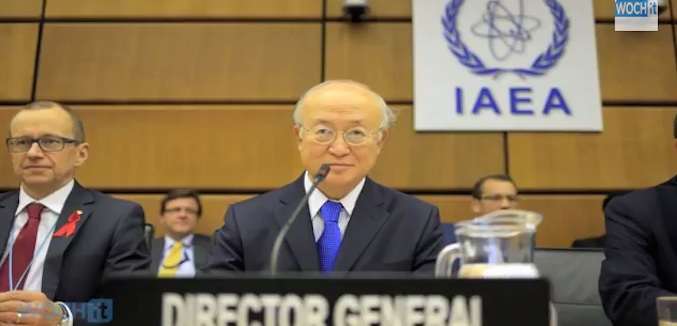The U.N. nuclear watchdog (IAEA) on Friday released its quarterly report (.pdf) on Iran’s obligations to enhance transparency around the country’s nuclear program, concluding – per the description published by Reuters – that Tehran had straightforwardly “failed to address concerns about suspected atomic bomb research by an agreed deadline.” The outlet also tersely assessed that the developments constituted “a setback to hopes for an end to an international stand-off over Tehran’s atomic activity.”
The IAEA’s broad findings had been leaked earlier in the week, but the full report detailed how Iran has refused to disclose the so-called “possible military dimensions” (PMDs) of its program.
The Iranians are obligated by half a dozen binding United Nations Security Council resolutions to fulfill commitments across four broad areas: halting uranium enrichment, halting plutonium production, halting ballistic missile development, and coming clean on PMDs.
The PMD issue has traditionally been treated by analysts as more fundamental than the other 3 categories, inasmuch as it is a vital prerequisite to establishing a verification regime that would monitor Iranian compliance with any sort of agreement. Verifying that the Iranians have stopped their illicit work requires – in the most basic sense – an understanding of what that work was and is.
Former IAEA deputy director Olli Heinonen has explained that forcing Iran to come clean is necessary to “understand the scope of the program… and set[] the baseline for… successful monitoring,” while Washington Institute for Near East Policy (WINEP) Managing Director Michael Singh has been even more blunt:
The interim agreement permits Tehran to retain all of its nuclear capabilities without requiring it to disclose all about its work, past or present, related to nuclear weapons. This is a dangerous combination. Without insight into the full extent of Iran’s clandestine nuclear activities, no amount of monitoring and inspection can provide true confidence that Iran lacks a parallel program beyond inspectors’ view.
The IAEA’s quarterly update was not promising. The Iranians had implemented just one of five promised transparency measures by an agreed August 25 deadline, then implemented another two after the deadline. The remaining two measures have not been met at all.
The Iranians also continued destroying parts of their Parchin military complex, where the IAEA suspects work related to the development of nuclear warheads took place:
The IAEA had also observed via satellite imagery “ongoing construction activity” at Iran’s Parchin military base, the report said. Western officials believe Iran once conducted explosive tests there of relevance in developing a nuclear weapon and has sought to “cleanse” it of evidence since then. Iran has long denied U.N. nuclear inspectors access to the base.
The IAEA blasted the move as one that “likely… further undermined the Agency’s ability to conduct effective verification.” The agency also described itself as remaining “concerned about the possible existence in Iran of undisclosed nuclear related activities involving military related organizations, including activities related to the development of a nuclear payload for a missile” and noted that it had in recent years obtained a range of information demonstrating that “Iran has carried out activities that are relevant to the development of a nuclear explosive device.”
[Photo: WochitGeneralNews / YouTube]




